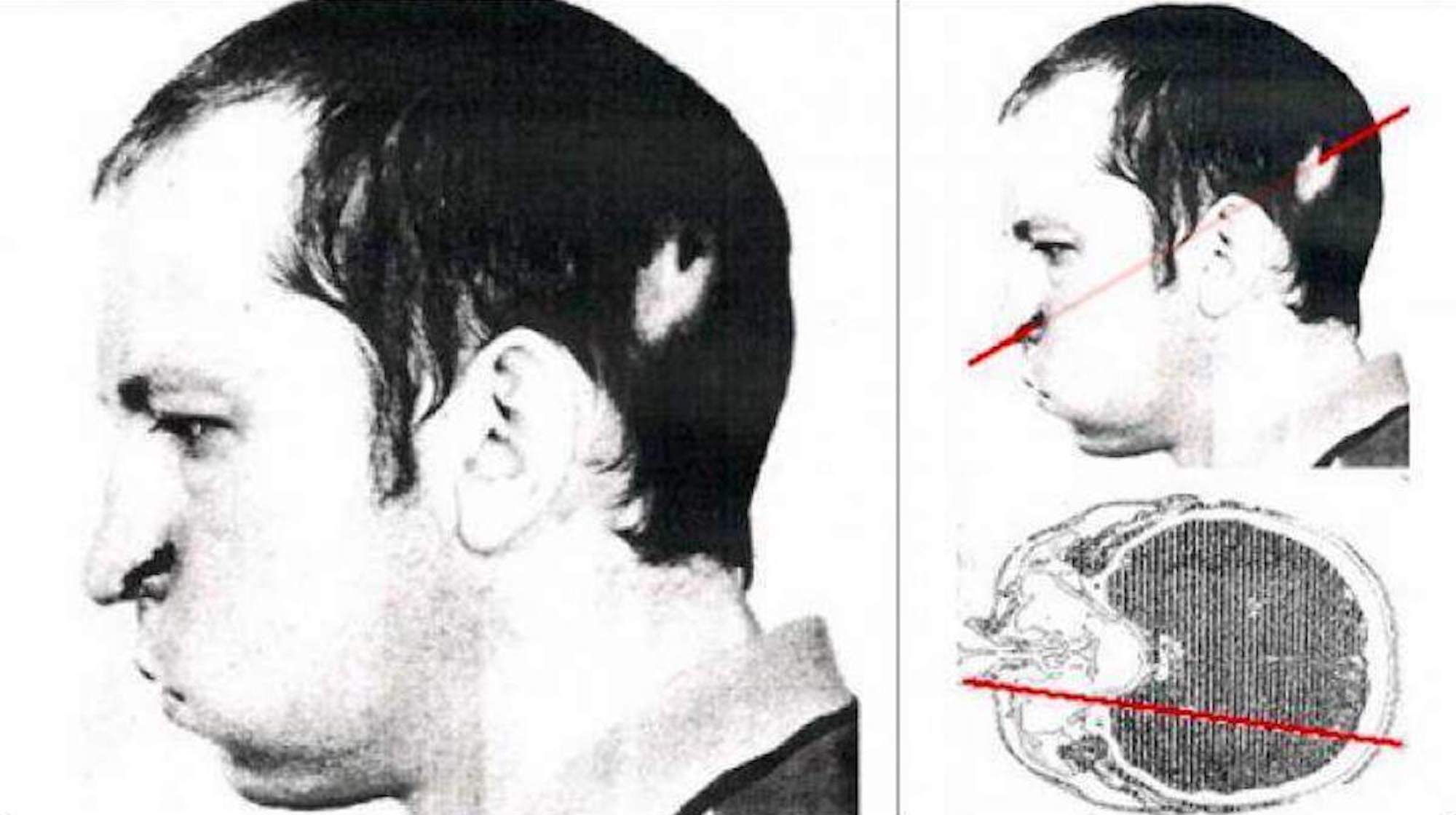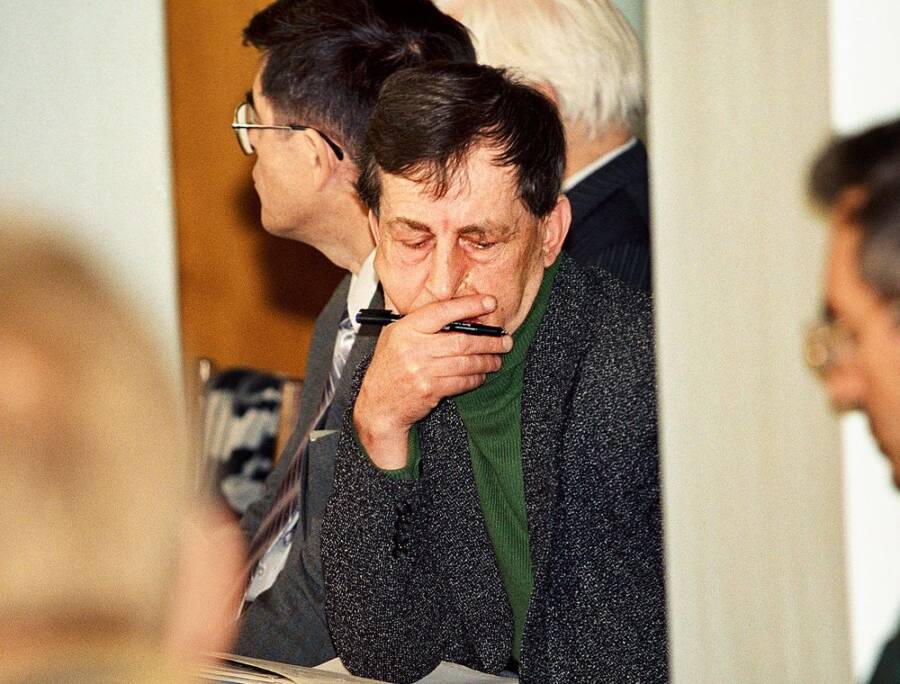Russian physicist Anatoli Bugorski is the only person known to have been directly exposed to a nuclear particle accelerator beam — and survive.

Public DomainOn July 13, 1978, a proton beam went straight through the head of Russian physicist Anatoli Bugorski, but he somehow survived.
From the Chernobyl disaster to the tragedies of Hiroshima and Nagasaki, the horrors of radiation exposure can send chills down anyone’s spine.
Symptoms of radiation sickness can range from nausea, vomiting, and seizures to sepsis, cardiovascular collapse, and often death. Even beneficial uses of radiation, such as in cancer treatments, may cause severe side effects.
Radiation can be fatal at just 5 grays (Gy). Cancer patients generally receive between 45 and 60 Gys broken down into smaller doses over a few weeks.
But in 1978, one physicist was exposed to over 3,000 Gys at once — 600 times the fatal dose. And he survived.
This is the incredible story of Anatoli Bugorski.
The Proton Accelerator Accident

Royalty-Free/CorbisAnatoli Bugorski is the only known person to have been directly exposed to a particle accelerator beam.
Anatoli Petrovich Bugorski was born in Russia on June 25, 1942. In 1978, at the age of 36, he was working as a particle physicist at the Institute for High Energy Physics in Protvino, a small town about 60 miles south of Moscow.
Protvino had been established as a Cold War-era science boomtown, created for the primary purpose of nuclear research. There, scientists could live with their families and conduct their top-secret work far away from prying eyes.
Bugorski was working on the U-70 synchrotron, a nuclear particle accelerator that, at the time it was built in 1967, generated the highest-energy beam in the world. While that record has since been broken, it is still the highest-energy accelerator in Russia.
On July 13, 1978, Bugorski leaned into the synchrotron to check a malfunction — without realizing the safety mechanism had been turned off.
All of a sudden, Bugorski experienced a flash “brighter than a thousand suns,” according to Discover Magazine. He had unwittingly put his head in the direct path of the main proton beam, which entered through the back of his head and exited through his nose.
Bugorski was blasted with 3,000 Gys of radiation. He was rushed to the hospital for treatment, though most of the doctors and scientists involved in his care were convinced he was a dead man walking.
They were wrong.
The Incredible Survival Story Of Anatoli Bugorski

Wikimedia CommonsThe U-70 synchrotron control room.
Despite having been hit with hundreds of fatal doses of radiation all at once, Anatoli Bugorski felt no pain.
Of course, Bugorski didn’t walk away from his accident completely unscathed. The proton beam had gone straight through his head. The left side of his face swelled up, and over the next few days, the skin that had come in contact with the beam blistered and peeled off. Soon, doctors examining Bugorski could see the path the beam had taken through his face, bone, and brain tissue by the burn it left behind.
Before Bugorski’s incident, nobody knew what would happen to a person exposed to radiation in such a concentrated form. Understandably, doctors assumed he’d be dead in a matter of days. But against all odds, he lived to tell the tale.
“This is, in effect, an unintended test of proton warfare,” Bugorski said, according to Wired. “I am being tested. The human capacity for survival is being tested.”
To this day, it is unknown why Bugorski didn’t experience more damage from the accident.
Some scientists have theorized that Bugorski was able to survive because of the narrow concentration of nuclear energy. Most deaths from radiation poisoning come from general exposure, such as in Chernobyl or Hiroshima and Nagasaki, where radiation seeped across victims’ entire bodies.
However, this theory is difficult to test, as Bugorski is still the only person known to have suffered this form of high-energy radiation exposure.
Anatoli Bugorski’s Mostly Normal Life Post-Accident

Andrey Solomonov/Global Look PressThe accident left half of Bugorski’s face paralyzed and stopped it from aging.
Anatoli Bugorski’s skin gradually healed from his accident. However, the burns left half of his face permanently paralyzed. In fact, as the right side of his face aged, the left side has remained frozen in time since 1978.
Still, Bugorski walked away from the accident mostly unscathed.
The beam of highly concentrated radiation had torn through his occipital lobe, responsible for visual processing, and his temporal lobe, responsible for sensory input and retention, such as language comprehension and memory. But Bugorski suffered virtually no intellectual damage, going on to complete his Ph.D. and continue his research at the Institute for High Energy Physics.
Over the years, he has suffered from occasional seizures and mental fatigue. He also lost hearing in his left ear. Otherwise, Bugorski, who turned 81 this year, has remained in surprisingly good health.
Despite being the only known person to have been exposed to the effects of a super-powered nuclear accelerator, Bugorski has rarely discussed his accident publicly, even nearly 50 years after the fact. The confidential nature of Russia’s nuclear research during the Cold War meant that he was unable to talk about his accident for about a decade. When the news finally broke, he was lauded as “a poster boy for Soviet and Russian radiation medicine,” according to Wired.
Bugorski has also expressed his willingness to participate in studies or research by Western universities and institutions. Unfortunately, he has never had the money to leave Protvino, where he reportedly still lives to this day with his wife and adult son.
After reading about the physicist who survived a blast of nuclear radiation, read about the man who was kept alive for 83 days against his will after a radiation accident in Japan. Or, read about the 14-pound plutonium orb that killed two scientists in New Mexico.






